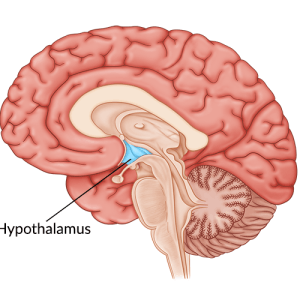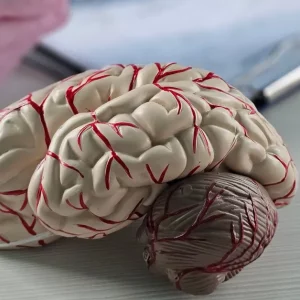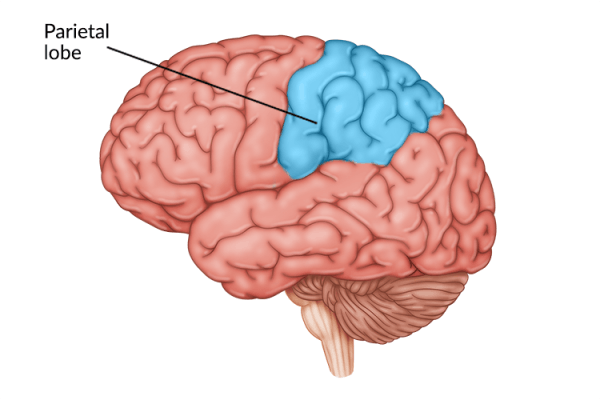Generally, diffuse axonal injuries (DAI) are a severe type of traumatic brain injury that affects multiple areas of the brain. As a result, various connections within the brain may become disrupted, leading to a wide range of secondary effects. Fortunately, many individuals with diffuse axonal injuries have the potential to recover affected functions and improve their quality of life.
To help you understand what to expect after a diffuse axonal injury, this article will discuss its:
Causes of Diffuse Axonal Injury
A diffuse axonal injury occurs when the brain quickly moves inside the skull as a result of a traumatic injury, such as a car accident. As the force of the impact causes the brain to repeatedly hit against the inside of the skull, the long connecting fibers in the brain, known as axons, can tear and potentially cause severe damage.
Doctors call this type of injury axonal shearing. The tearing of the axons disrupts the transmission of messages between neurons, leading to a loss of function. Additionally, axonal shearing causes swelling in the brain, which increases pressure in the skull.
Because most diffuse axonal injuries result in microscopic tears, damage can be difficult to detect with imaging.
Any strong shaking, sudden acceleration, or blunt injury can lead to axonal shearing. Some of the most common causes of diffuse axonal injury include:
- Car accidents
- Sports injuries
- Falls
- Acts of violence
- Shaken baby syndrome
Diffuse axonal injuries are one of the common types of injuries to occur following severe trauma to the head. In fact, they are present in over 40% of hospital admissions related to traumatic brain injury.
Generally, the more severe the traumatic event, the higher the potential for axonal shearing to occur. Diffuse axonal injuries most commonly affect the cerebral cortex, corpus callosum, and brain stem.
To help you understand what to expect when a DAI occurs, the following section will discuss common secondary effects of diffuse axonal injury.
Diffuse Axonal Injury Symptoms
A diffuse axonal injury causes axonal shearing at multiple regions of the brain. Because of this, individuals may experience a wide range of secondary effects at varying severities.
The primary symptom of diffuse axonal injury is loss of consciousness. Mild forms of DAI are often characterized by a coma without a focal lesion and axonal damage at various regions of the brain.
However, not everyone with a DAI will lose consciousness. Other symptoms of this type of injury include:
- Cognitive deficits such as difficulty with memory, problem solving, and decision making. Loss of memory is one of the most common problems after DAI.
- Confusion may occur as a result of cognitive deficits.
- Severe headaches may occur as a result of inflammation of the brain.
- Nausea and vomiting may occur due to balance problems caused by cerebellum damage or as a result of severe headaches.
- Communication difficulties may occur if the areas of the brain responsible for motor control or the language centers of the brain are affected.
- Motor impairments may occur if the regions of the brain responsible for regulating movement such as the motor cortex, brainstem, thalamus, or cerebellum are affected. As a result, individuals may experience weakness or paralysis, loss of balance, and/or abnormal muscle tone.
- Behavioral changes such as irritability, dependency, anxiety, depression, and mood swings.
- Dysautonomia refers to a malfunction of the autonomic nervous system which controls unconscious bodily functions such as heart rate, digestion, and breathing. Individuals with dysautonomia may experience fatigue, low blood pressure, dizziness, and anxiety attacks.
Depending on which areas of the brain are affected and the severity of axonal shearing, individuals may experience several of these secondary effects. Up next, we’ll discuss the various classifications of DAIs.
Diffuse Axonal Injury Grading System
Diffuse axonal injuries disrupt the connections between neurons. As a result, various functions of the brain can be affected. Generally, the more severe the diffuse axonal injury, the longer the duration of coma.
The Adams classification of diffuse axonal injury is often used to describe the severity of a diffuse axonal injury. It includes 3 categories:
- Grade 1 (mild DAI) ischaracterized by axonal damage in the white matter of the cerebral cortex.
- Grade 2 (moderate DAI) is characterized by a focal lesion in the corpus callosum in addition to axonal damage in the white matter of the cerebral hemisphere.
- Grade 3 (severe DAI) is characterized by focal lesions in the corpus callosum and brainstem, as well as axonal damage in the white matter of the cerebral hemisphere.
Fortunately, even after a severe diffuse axonal injury, there is hope for recovery.
Diffuse Axonal Injury Recovery Signs

Many patients who recover from a diffuse axonal injury demonstrate similar signs. These signs are typically a positive indication of working brain function.
The presence of neurological reflexes is typically viewed as a positive sign of diffuse axonal injury recovery. Following a DAI, physicians may look for:
- Pupillary reactivity. This reflex involves shining a light on the patient’s eyes. If their pupils shrink, it indicates that the brain stem is functioning.
- Oculocephalic response. These reflex tests that when the individual’s head is turns to the left, their eyes turn to the right. This is also a test for the brain stem.
- Gag reflex. This reflex tests that the individual gags or coughs when a cotton swab or medical tube makes contact with the throat.
To further enhance recovery outcomes, various treatment interventions may be recommended. In the following section, we’ll address rehabilitative treatments that can help individuals with DAIs improve their functional abilities.
Diffuse Axonal Injury Treatment
Diffuse axonal injuries are often more challenging to treat than focal brain injuries because they affect multiple areas of the brain (focal vs diffuse brain injury).
The severity of a DAI has a major impact on one’s recovery outlook. For example, those who regain consciousness within two weeks are considered to have a milder injury and are more likely to achieve full recovery. In cases of more severe DAIs, recovery is more difficult to predict. However, regardless of the severity of the injury, individuals may be able to recover affected functions by utilizing neuroplasticity.
Neuroplasticity refers to the brain’s ability to reorganize its neural circuitry based on the behaviors we repetitively perform. It allows for functions affected by brain damage to be rewired to unaffected regions of the brain. Furthermore, these functions can be improved through intensive practice.
During the first few months after a diffuse axonal injury, the brain experiences a heightened state of neuroplasticity. As a result, individuals are often able to promote adaptive changes at a quicker rate. One way to take advantage of this is to participate in rehabilitative therapy as soon as possible. Below, we’ll discuss several interventions that can help promote DAI recovery.
Physical Therapy
One of the main goals of physical therapy during diffuse axonal injury recovery is to regain control over your movements.
After a DAI, the connection between the brain, nerves, and muscles is disrupted. By participating in physical therapy, individuals can learn effective exercises that target the affected body parts and stimulate the brain to utilize neuroplasticity.
Want 25 pages of TBI recovery exercises in PDF form? Click here to download our free TBI Rehab Exercise ebook now (link opens a pop up for uninterrupted reading)
Speech Therapy
If your diffuse axonal injury has affected your ability to speak or swallow, speech therapy is essential. A speech-language pathologist will guide you through various activities and exercises to strengthen your orofacial muscles, improve your social communication skills, and address cognitive deficits.
Occupational Therapy
Occupational therapy (OT) works on developing the specific skills you need to regain independence in your home, work environment, or community. It often involves practicing activities of daily living such as feeding, transferring, and dressing to improve your functional abilities.
If mobility is significantly affected by DAI, occupational therapy may involve learning new ways to perform everyday activities such as using adaptive tools. This will help compensate for loss of motor control and allow individuals to perform tasks they otherwise may not be able to.
Cognitive-Behavioral Therapy
Some individuals may struggle to adapt to life after axonal brain injury. Cognitive-behavioral therapy helps individuals understand what is causing their negative thoughts or behaviors and teaches them more effective ways to cope.
Diffuse Axonal Injury: Key Points
Diffuse axonal injury is a serious condition and can be one of the most debilitating types of traumatic brain injuries. But as with all brain injuries, the key to making a good recovery lies in activating neuroplasticity through therapeutic exercises.
By participating in rehabilitative therapies, individuals have the potential to recover affected functions and significantly improve their quality of life.









